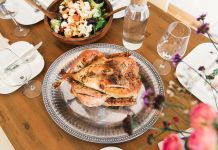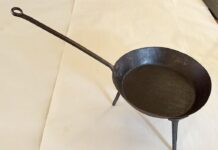By Tracy Turner | Ohio State Chow Line
Q: “I’m growing my own produce this year since I’ve got time on my hands due to the pandemic. I want to be able to store the foods that I grow and don’t immediately use, but I have no idea how to get started. Do you know of any resources?”
A: Home food preservation is expected to be very popular this year, as many people such as yourself have taken on several kinds of new hobbies to pass time while staying home during quarantine.
Temporary business closures due to stay-at-home orders have also resulted in more people turning to gardening, whether due to a fear of food supply chain disruptions or a desire to have more control over the foods they eat. Nationwide, more consumers are expected to plant gardens this year. For example, online searches for “growing vegetables from scraps” increased 4,650% in March compared the same time last year, according to Google Trends.
“Empty grocery store shelves, decreased incomes, more time at home, and an increased sense of an unknown future have many people wanting to do what they can to be more self-sufficient,” says Kate Shumaker, an Ohio State University Extension educator and registered dietitian. OSU Extension is the outreach arm of The Ohio State University College of Food, Agricultural, and Environmental Sciences (CFAES).
“That has led many to a new era of ‘victory gardens,’ where local food security starts in your own back yard,” she said, noting media reports of up to 300% increases in seed sales this spring. “As a result, we expect home food preservation to be very popular with consumers this year.”
With that in mind, the OSU Extension Food Preservation Team is now conducting live webinars and virtual office hours biweekly through the end of July to help consumers learn more about home food preservation and processing methods, and to help ensure that these methods are done correctly and safely.
The sessions are Tuesdays from 4 to 5 p.m. Each one starts with a short presentation followed by questions from participants. Each session will be recorded and posted at go.osu.edu/virtualcanning.
“It’s important that people precisely follow the proper steps and recipes when home-canning to help prevent botulism, a rare but potentially deadly illness produced by bacteria called Clostridium botulinum,” Shumaker said.
These bacteria are found in soil and can survive, grow, and produce a toxin in certain conditions such as when food is improperly canned, according to the U.S. Department of Health and Human Services. The toxin can affect your nerves, paralyze you, and in some cases, cause death.
That’s what happened in April 2015 when one central Ohio woman was killed and 24 others were hospitalized with botulism after eating potato salad that was made with improperly home-canned potatoes.
While canning is not really a complicated process, you do have to follow researched and tested recipes, Shumaker said.
“Home-canning is a science, but it’s not the time to experiment. You can’t make up your own recipes,” she said. “A lot of things can affect the safety of your final product.
“It’s important not to alter the acid (pH) level of the food in the jar, the sizes of the pieces of food, the canning method, or the processing time. Each of these items plays a role in the amount of time and heat it will take for the core (center) of the jar to reach a safe temperature to keep the food safe to eat and not make someone sick.”
Here is the listing of topics for the currently scheduled canning webinars.
- May 19: preparing for canning
- June 2: jams and jellies
- June 16: canning and freezing vegetables
- June 30: canning and freezing fruits
- July 14: pickles
- July 28: salsa
Register for the webinars at go.osu.edu/virtualcanning.
Additionally, CFAES experts have produced several YouTube videos on food preservation and canning. They also offer recipes and other resources for food preservation and canning at go.osu.edu/food-
Chow Line is a service of The Ohio State University College of Food, Agricultural, and Environmental Sciences and its outreach and research arms, Ohio State University Extension and the Ohio Agricultural Research and Development Center. Send questions to Chow Line author Tracy Turner, 364 W. Lane Ave., Suite B120, Columbus, OH 43201, or turner.490@osu.edu.
















